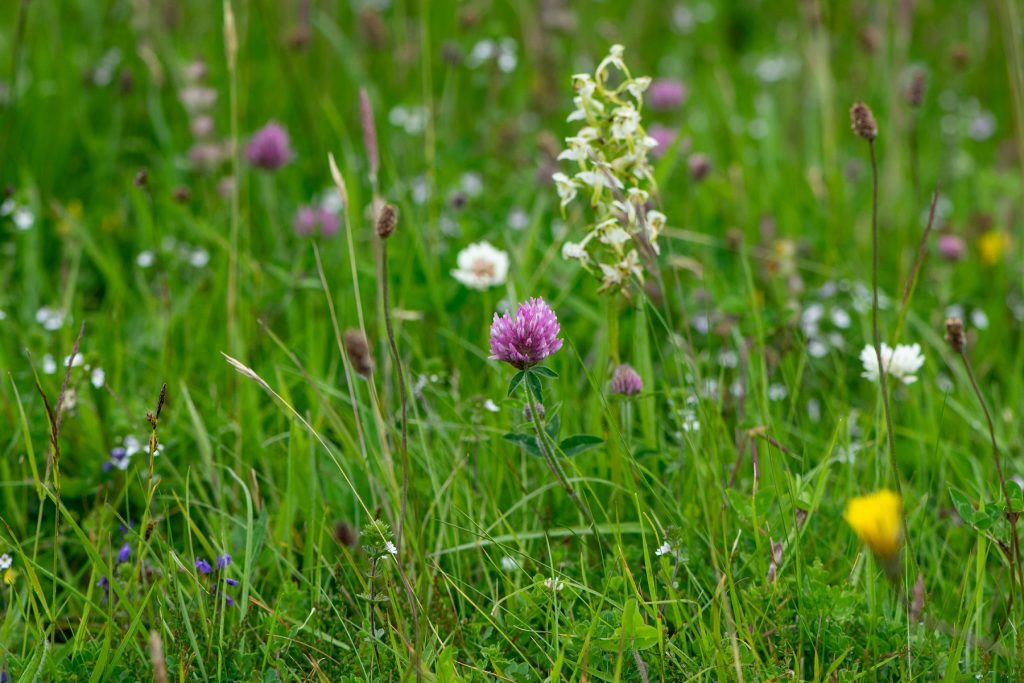New videos and practical guides have been created for farmers to help wildlife, such as pollinating insects, thrive on farms.
The Scottish Wildlife Trust and SAC Consulting, part of Scotland’s Rural College (SRUC), worked with farmers to produce the materials.
The information, which is available on the Farm Advisory Service website, provides guidance on how to regenerate hedgerows, including conservation laying which is a quicker and easier alternative to traditional laying.
There is also guidance on recognising and managing species-rich grasslands, including how adaptive multi-paddock or mob grazing can promote biodiversity while reducing costs associated with fertilisers and supplementary feeding.
The Scottish Wildlife Trust is working with more than 40 partners, including two farms, along the Ayrshire coast to connect a ’superhighway’ of nectar and pollen-rich sites for wild pollinators. The Irvine to Girvan Nectar Network will help to ensure the long-term survival of pollinating insects in the area.
Low Pinmore Farm in Maybole has been re-laying hedges to stock proof fields. Not only can this support a wealth of wildlife, but it provides shelter and shade to livestock – improving animal welfare. The importance of hedgerows in capturing and storing carbon is also becoming increasingly recognised.
Meanwhile, Balsar Glen in Turnberry has been trialling an Ayrshire-specific wildflower seed mix along with adaptive multi-paddock grazing techniques with its Aberdeen Angus and Hereford cattle to enable species-rich grassland species to flourish. Diverse grasslands support a wealth of wildlife above and below ground, supporting complex interactions between plants, microbes and nutrients. Different plant species also vary in how they respond to environmental change, with some thriving in dry conditions and others in wetter conditions. This means diverse swards are better able to withstand drought and flooding.
SAC Consulting is sharing these practical learnings from farmers and conservationists to encourage more landowners to manage their hedgerows and species-rich grasslands.
Dr Lorna Cole, Senior Ecologist at SAC Consulting, said: “It is brilliant to see conservation bodies working with farmers to tackle biodiversity decline. We need more connected corridors of semi-natural habitats throughout our countryside to allow wildlife, such as pollinating insects, to move freely through an otherwise inhospitable landscape.
“We have created our advisory videos and guides to help more farmers realise that farming for wildlife can be beneficial to their animals’ welfare, help reduce their input costs and tackle the effects of climate change they may encounter such as flooding, drought and soil erosion.”
Lynne Bates, the Scottish Wildlife Trust’s Irvine to Girvan Nectar Network project officer, is keen to work with more farmers in Ayrshire by offering advice, practical skills training like hedge laying, providing wildflower seed mix and flowering trees and shrubs.
She said: “The new resources will help farmers understand how straightforward it is to improve the diversity of their grasslands and manage their hedgerows.”
Heather Close from Balsar Glen farm said: “We’re delighted to be partnering with the Nectar Network to make our farm even more pollinator friendly.
“We outwinter our cows and while we take great care to minimise poaching, it’s not possible to completely avoid it in our wet climate. As nature would have it, poached areas are perfect germination sites for wildflowers as there is less competition from grasses. So, using animal impact to our advantage, we’ve hand sewn some of the Nectar Network’s wildflower seed mix on these areas.
“These wildflowers are not only vital for pollinators but are useful forage for the cattle. Some are nitrogen fixers, others reduce worm burden, many have deep roots and each plant has a different mineral profile. This diversity enables the cows to freely select plants that will meet their nutritional needs at a particular point in time.”
For more information about how to get involved visit: Irvine to Girvan Nectar Network | Scottish Wildlife Trust.






